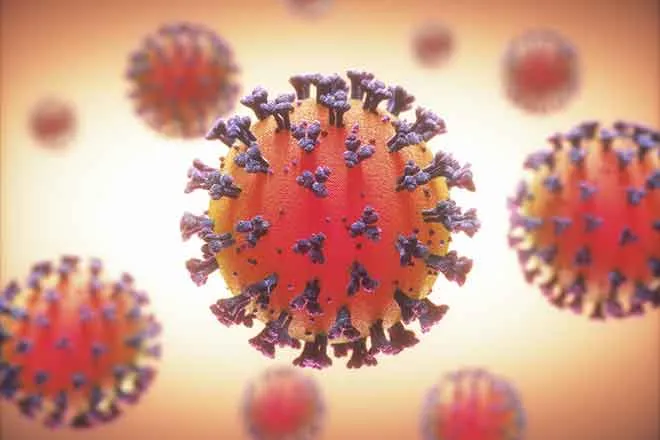
Long COVID leaves newly disabled people facing old barriers

Laura Mauldin, University of Connecticut
Up to one-third of COVID-19 survivors will acquire the condition known as long or long-haul COVID-19. The American Academy of Physical Medicine and Rehabilitation estimates that long COVID will add as many as 22 million individuals to the U.S. population of disabled people.
I am a sociologist and researcher focusing on disability. I am aware of the challenges awaiting newly disabled people living with what scientists call post-acute sequelae of SARS-CoV-2 infection, a condition in which someone with COVID-19 continues to have symptoms for weeks or months after infection. One of those challenges is qualifying for Social Security Supplemental Income, the program that provides financial support to disabled people with limited resources.
To receive support, applicants generally must show that they have a condition that greatly limits their ability to work. The program routinely denied the majority of applicants before the pandemic. Between 2009 and 2018, the program denied 66% of applicants.
But the impact of long COVID, a newly discovered condition, is difficult to measure. Its symptoms are difficult to prove, varying in type, intensity and duration, between individuals or over time in the same person.
Survival at a price
While most people recover from their initial acute infection, some survivors experience continued or newly developed symptoms. Long COVID symptoms can include shortness of breath, fatigue and brain problems, such as difficulty concentrating, remembering or making decisions.
The Centers for Disease Control and Prevention defines disability as “any condition of the body or mind that makes it more difficult for the person with the condition to do certain activities and interact with the world around them.”

Long COVID sufferers report lingering symptoms that are seriously debilitating. They tell researchers that the condition makes it hard to live their lives as they had before the illness. Some patients describe needing hours of extra sleep after standing or walking a short distance. One study showed cognitive deficits, or “brain fog,” in patients with long COVID. They had poor recall ability or were slow in processing information. These problems, they told researchers, limited their capacity to work.
A 2021 study of long COVID patients in the UK found that 28% were out of work because of their condition. Another study showed that 46% reduced their work hours because of long COVID symptoms.
Undefined and indeterminate
Although the World Health Organization has issued a definition of long COVID, the U.S. medical community has not defined it, especially the “long” part. In fact, in a study that has not yet been peer-reviewed, researchers estimated that approximately 43% of COVID-19 survivors may experience long COVID, which the study defined as having symptoms lasting 28 days or more. In another study, half of COVID-19 survivors reported symptoms beyond six months.
But since long COVID symptoms involve different systems in the body, and there is no simple way to test for it, getting a diagnosis can be difficult. This adds an extra challenge to qualifying for Social Security.
The Center on Budget and Policy Priorities, a nonpartisan research and policy institute, previously noted decades of underinvestment in the Social Security Administration before the pandemic. The institute is now calling for renewed investment to cope with rising numbers of disabled people.
It is also hard to predict which COVID-19 patients will develop long COVID, or predict the long-term outcomes for those who do. Greater likelihood of severe disease has been found to correlate with a higher risk of long COVID. Complicating matters, however, is the fact that long COVID can emerge from relatively mild cases as well.
Unpredictable and uncertain
Symptoms seen in patients with long COVID look a lot like symptoms of other hard-to-diagnose and disabling conditions. One reason may be the molecular and physiological similarities researchers recently found between long COVID and diseases like multiple sclerosis, rheumatoid arthritis and lupus.
Long COVID appears to be the newest in a long line of “invisible” or episodic conditions not immediately diagnosed as disabilities. They include fibromyalgia, Lyme disease and chronic obstructive pulmonary disease.
People with fibromyalgia, for example, often struggle with symptoms similar to long COVID, including fatigue or thinking difficulties. Despite a history dating back to the 19th century, the criteria for diagnosing fibromyalgia have existed only since 1990. It remains a controversial illness with few accepted treatments, but that began to change as patients shared their experiences with the condition. Nevertheless, people with conditions like these cope with doctors, social workers and others who might assume that their illness isn’t real, and they face obstacles obtaining financial support, housing and responsive health care.
Disbelief and denial
Currently, approximately 8 million people receive Social Security Supplemental Income. But surveys show the Social Security Administration still denies many applicants, which studies have linked to stereotypes about disabled people as “conning the system.”
A February 2021 study showed that negative attitudes toward people with significant disabilities are common among health care providers, affecting the ability of those with long COVID to get the care they need. Speaking of care, research on long COVID has led to proposed treatment guidelines, which promise to help people live better with the condition.
In another promising development, the Department of Health and Human Services and the Civil Rights Division of the Department of Justice recently announced that long COVID can qualify as a disability under the Americans with Disabilities Act.
This means that those with long COVID can qualify for community resources. Those still in the workforce can get employment-related reasonable accommodations, such as flexible work times and remote work. For now, that’s all they can count on.
[Get fascinating science, health and technology news. Sign up for The Conversation’s weekly science newsletter.]![]()
Laura Mauldin, Associate Professor of Women's Gender & Sexuality Studies and Human Development & Family Sciences, University of Connecticut
This article is republished from The Conversation under a Creative Commons license. Read the original article.

















